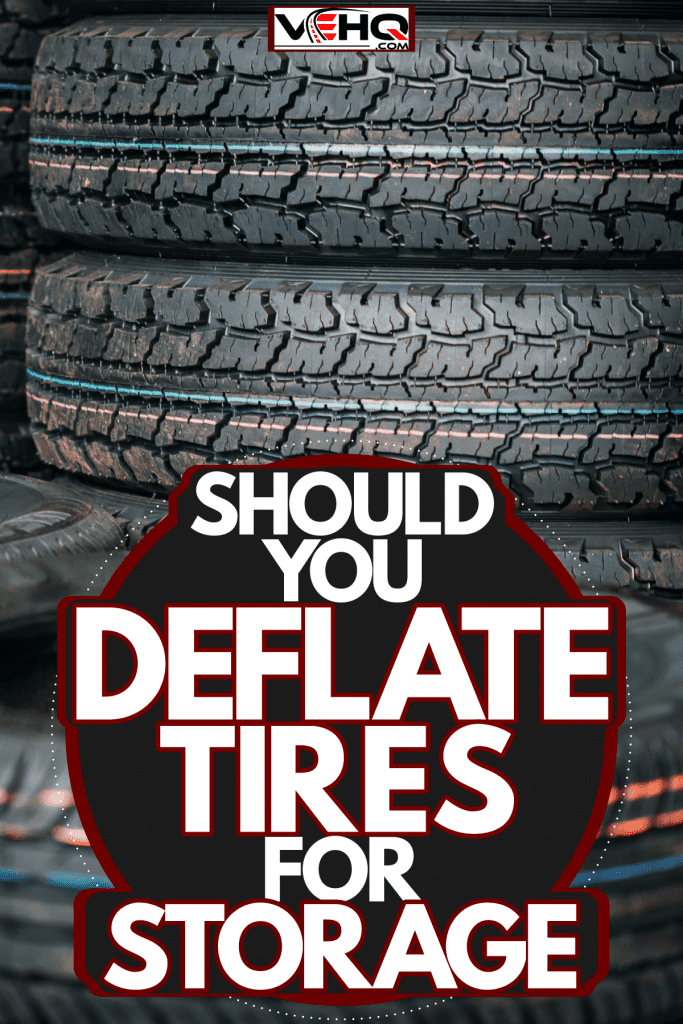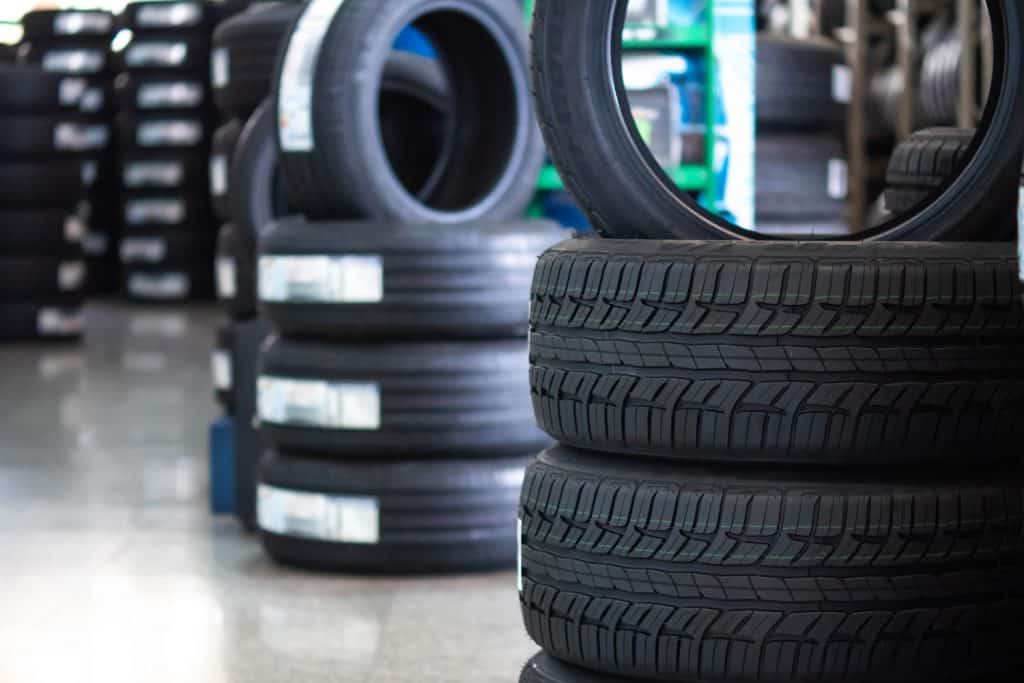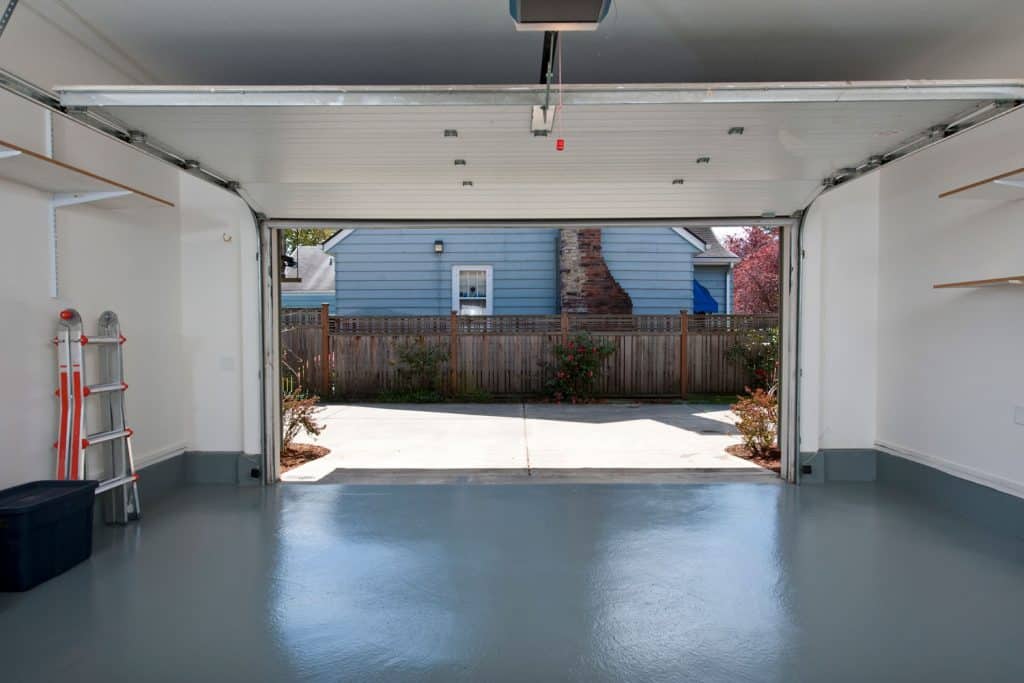Storing spare tires is something that doesn't come as an important event to many. After all, it's a large and heavy piece of rubber! In most cases, people will store it anywhere without worrying if it's the correct way. And, to save space, some might even consider deflating them. If you're wondering if you should deflate tires for storage, let's take a look at what our research found.
Regardless of your decision, it doesn't matter if you store the tires deflated or inflated. If you must deflate the tire, some recommend decreasing it by 50% capacity. This requirement applies to situations where you need to store them for the long term.
However, if the tires are mounted on a rim, they should be inflated to 15 psi. If the tires are still on the car, some recommend filling them to the maximum pressure listed.
There's still more to cover on the topic of tire storage. While tires might seem like simple giant pieces of rubber, they do have their requirements. Like most materials, they are susceptible to environmental damage. So, it's crucial to know how to store them. If you'd like to know this and more, keep reading ahead.

To Deflate or Not To Deflate
As mentioned above, it doesn't matter all that much if you want to keep the tire deflated or inflated. However, some situations have different requirements. Some of those instances could be when you leave the tire on a rim or the vehicle.
In these cases, it's advisable to keep tire pressure as is or slightly overinflated. Simply put, it's because of gravity. Even though your vehicle isn't in use, the tires continue to support its weight. In addition, it's stationary for long periods.

When this happens, tires are susceptible to developing a flat spot. And, when it's in this position for long periods, the tires will have permanent deformation or damage. So, to prevent this from occurring, some suggest checking on them periodically.
Ideally, each tire should rest on a soft surface like a piece of cloth, squares of old carpet, or a folded-up blanket. Of course, it's not good for the tire to stick to one position the entire time. So, you'll also have to rotate it to a new one once a month. This way, you ensure the tire doesn't develop deformities.
Mounted on Rims
If you're going to store tires mounted on rims, the same rules above apply in this situation. However, the rims will help the tires keep their shape. Still, you'll need to roll once a month into a new position. If you'd like to mount them to save space, you can hang them on tire hooks.
Tires Only
If you're storing the tires alone with no type of support, there are a few requirements that you should follow. First, tires should stand upright instead of flat. Unlike mounted tires, you shouldn't hang tires on a tire hook. Hanging them on a hook might cause them to sag after a while.
The same standard applies here in comparison to tires mounted on vehicles. You'll have to rotate them once a month into a new position. If possible, keep them off of hard surfaces.
It's also possible to deflate them to about 10 psi. However, there's no requirement for you to do so. Some users experience no impact in the long term. So, if you must deflate them, 10 psi could be a safe point.
Is It Okay To Store Tires in the Garage?

Now that we went over some requirements to store tires, you'd probably want to find out more. For example, where can you keep them? Will they do fine in a garage?
The answer can vary depending on some conditions. Is the garage an area that won't be exposed to sunlight constantly? In most cases, it will! Ideally, you'll want to store tires somewhere they aren't too exposed to sunlight.
Additionally, the garage is a spot susceptible to weather exposure. Tires, which contain rubber, won't do well if it's in a moist area. If you don't have space, the garage will be acceptable.
The Ideal Conditions For Tire Storage
However, there are much better areas where you can store your tires. But, before we get to that, let's go over what the tires need to ensure they last as long as possible.
As many suggest, tires need a cool, dark, and well-ventilated area. Additionally, there should be minimal air circulation. Tires won't do well in zones that are wet, humid, oily, greasy, or in direct sunlight.
For the reasons stated above, the garage might not seem like the best place to store tires. They're in direct sunlight. And, depending on the weather, produce a humid or greasy environment.
The garage is also an area where you might keep a generator or other ozone generating sources. If you don't know, ozone is terrible for tires because it increases the chances of the tires breaking down. When in constant exposure to ozone, the rubber reacts by breaking down polymer chains. As a result, you'll see cracks on the sidewall of the tire.
Where Can You Store Tires?
With all the information above, you can gather that you need a climate-controlled area to store your tires. The zones you don't want to keep tires in are:
- Garages
- Sheds
- Attics
They go through a wide range of environmental conditions and temperatures. As such, the ideal area you'd want to keep tires in is the basement. Regardless, it's up to you where you can find space to keep tires.
How Do You Keep Tires From Dry Rotting in Storage?
If you've attempted to store tires for the long term, you might have witnessed dry rotting on them. Dry rotting occurs when the tire loses too much moisture. As a result, they become tough and brittle.
As some suggest, tires fight against dry rot by containing oils and resins within. But, to activate them, they need pressure downwards. Since you're storing the tires, they won't get the pressure that they would require.
So, in combination with some of the requirements in the previous section, you can prevent them from drying out. To restate, you'll want a climate-controlled room with no direct sunlight. Secondly, before you store them, inspect and clean the tires if necessary.
Lastly, you should also limit exposure to elements like oxygen, ozone, and environmental changes. So, you can also keep them in airtight bags. This way, you can reduce the rate of dry rotting.
Click here to see this tire tote on Amazon.
Of course, you have some options in terms of airtight bags. You can opt for a tire tote. Though, if you don't want to make the extra purchase, you can also use:
- Large black garbage bags
- Vacuum sealable plastic
- Thick tarps (wrapped around tires)
How Long Will Tires Last in Storage?
If you follow the guidelines above, you can ensure the tires can last around six years. They have the potential to last longer. But, after the six-year mark, you should run an inspection on them. And, if you plan to use them, you should inspect them annually.
The older the tires are, the more careful you have to be. Tires will tend to have a higher potential to malfunction as they age. So, realistically, they will last you around three to five years. It all depends on how well they were treated during storage.
How Do You Store Winter Tires?
Winter tires should follow the same protocols. Meaning, you want the same types of climate-controlled conditions and limited exposure to the outside. However, winter tires can hold much more gunk. So, in that case, you'll want to pay attention to detail and clean the tires as much as possible.
To clean them, you will need a tire brush, soap, and water. Remove all the grime and dirt. Try to limit the amount you leave on there. While it might not seem like it would do much, it can be corrosive.
Click here to see this tire brush on Amazon.
All in all, follow the protocols mentioned above, and your winter tires should be fine.
What Is the Best Way To Store Tires With Rims?
Tires mounted on rims have the advantage of added support. Since the rim will help the tire keep its shape, it offers you a bit more leeway on how you store it. As mentioned previously, you can hang tires on a tire hook to save space.
Click here to see this tire hook on Amazon.
If you don't have the wall space for tires hooks, you can also stack them. Still, the best way to store them is if you hang them on a tire hook. This way, you take the weight off of the tire. It also takes away to need to rotate the tire into a new position.
One detail to keep in mind, you should hang the tire through the rim. Without a rim, hanging tires on a tire hook is a bad idea. It can cause them to sag resulting in damage.
Final Takeaway
Taking care of every part of a vehicle is the key to maintaining them. With tires, there are additional considerations to make when you're storing them for the long term. If you don't treat them well, they can end up leaving you in an accident! We hope you found the information above helpful.
Before you go, do you have other concerns regarding tires? Are you wondering if they should be replaced in pairs? We have the answer! You can find out more by checking our post here.
Do you want to explore how tires degrade over time? We cover the topic in depth. You can check our post here for more! Until next time!



